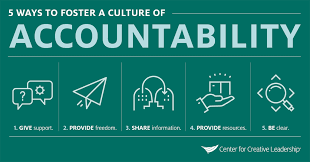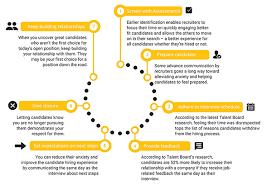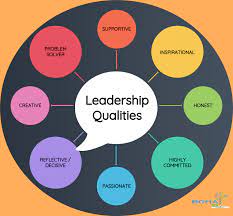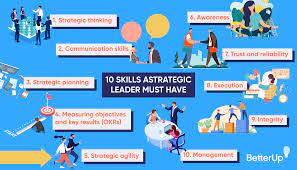The 5 Most Common Mistakes When Creating A Leadership Development Program
When it comes to creating leadership development programs, there are a few common mistakes that organizations often make. Here are the five most common ones:
1. Not Defining the Purpose of the Program
One of the most common mistakes is not clearly defining the purpose of the leadership development program. What is the program meant to achieve? What kind of leaders do you want to produce? Without a clear purpose, it will be difficult to design an effective program.
2. Not Assessing Leadership Needs
Another mistake is not assessing the specific leadership needs of your organization. What skills and knowledge are your leaders lacking? What competencies do they need to develop? Without a clear understanding of your organization’s needs, it will be difficult to create a program that meets those needs.
3. Not Selecting the Right Participants
A third mistake is not carefully selecting the participants for the program. Who will benefit most from the program? Who has the potential to be a great leader? Not carefully selecting participants can lead to a less effective program and lower ROI.
4. Not Creating an Engaging Program
Once you’ve selected participants, it’s important to create an engaging program that meets their needs and helps them develop as leaders. If the program is boring or doesn’t challenge participants, they’re likely to disengage and won’t get much out of it.
5. Not Evaluating Results
Finally, one of the most common mistakes is not evaluating results properly
leadership principle
Leadership principles are the foundation upon which successful organizations are built. Unfortunately, many leadership development programs fail to properly address this critical component. As a result, participants often leave the program with a false sense of accomplishment and little to show for their time and effort.
To avoid this common pitfall, it is important to keep the following five leadership principles in mind when creating a leadership development program:
1. PURPOSEFUL DIRECTION: A leadership development program must have a clear purpose and direction. Without these, participants will quickly become frustrated and lose interest.
2. RELEVANT CONTENT: The content of a leadership development program must be relevant to the needs of participants. If it is not, they will again become quickly disillusioned and drop out.
3. FOCUSED LEARNING: A leadership development program must be focused on learning. If it is merely a social event or networking opportunity, it will not produce the desired results.
4. EFFECTIVE COMMUNICATION: Communication within a leadership development program must be effective in order to ensure that participants are able to understand and assimilate the information being presented.
5. SUSTAINABLE IMPLEMENTATION: Finally, any leadership development program must be sustainable if it is to have a lasting impact. This means that it cannot be a one-time event but rather something that is regularly revisited and reinforced over time.”
matrix of leadership
When creating a leadership development program, it is important to avoid common mistakes. This includes creating a matrix of leadership that is too complicated, focusing too much on individual development and not enough on team development, failing to provide adequate resources, and not having a clear plan for succession.
Creating a matrix of leadership that is too complicated can lead to confusion and frustration among participants. The matrix should be designed to be simple and easy to understand.
Focusing too much on individual development and not enough on team development can lead to a program that is ineffective. It is important to focus on both individual and team development in order to create a well-rounded program.
Failing to provide adequate resources can lead to a program that is underfunded and unable to meet its objectives. It is important to have a well-funded program in order to ensure its success.
Not having a clear plan for succession can lead to a leadership vacuum when the current leaders leave. It is important to have a succession plan in place so that there is continuity in leadership.
Defining the purpose and objectives of the leadership development program.

The purpose of the leadership development program is to provide employees with the skills and knowledge needed to be effective leaders in their respective organizations. The objectives of the program are to help participants develop their leadership skills, improve their communication and interpersonal skills, and learn how to effectively manage people and resources. The program will also provide participants with an opportunity to network with other leaders in the organization and learn from their experiences.
Selecting the right mix of activities to support the purpose and objectives.
The next step is to select the right mix of activities that support the purpose and objectives. The selection process should consider what activities will best help achieve the objective, how much time and resources are required, and who will be responsible for each activity. Once the activities are selected, they should be sequenced in a logical order that supports the overall strategy.
Incorporating input and feedback from participants throughout the program.
This program is designed to allow for input and feedback from participants at various stages. The aim is to create a space where people feel comfortable communicating their thoughts and ideas, while also providing opportunities for growth and development. Throughout the program, there will be several points where participants can give input or feedback. These moments will be used to help shape the direction of the program, as well as identify any areas that need improvement.
Encouraging and supporting ongoing development after the program ends.
When a program ends, it can be difficult for participants to maintain the progress they made. Encouraging and supporting ongoing development after the program ends can help participants keep up the good work. There are a few ways to do this:
1. Keep in touch with participants. Check-in with them periodically to see how they’re doing and offer support as needed.
2. Connect participants with resources. If there are resources that can help them maintain their progress (such as online tools or support groups), make sure they know about them.
3. Help them set goals. When participants have specific goals to work towards, it can be easier for them to stay on track.
Evaluating the program to identify improvements for future iterations.
The program was successful in that it achieved its desired outcome. However, there are areas for improvement that should be addressed in future iterations. One area is the level of engagement from participants. While the program did have high levels of engagement at certain points, there were also times when engagement lagged. This could be due to a number of factors, such as the content not being interesting enough or the format not being engaging enough. Another area is the timing of the program. There were times when the program ran too long and other times when it was too short. This made it difficult to maintain a consistent level of interest and energy throughout. Future iterations should aim to find a balance between these two extremes.






